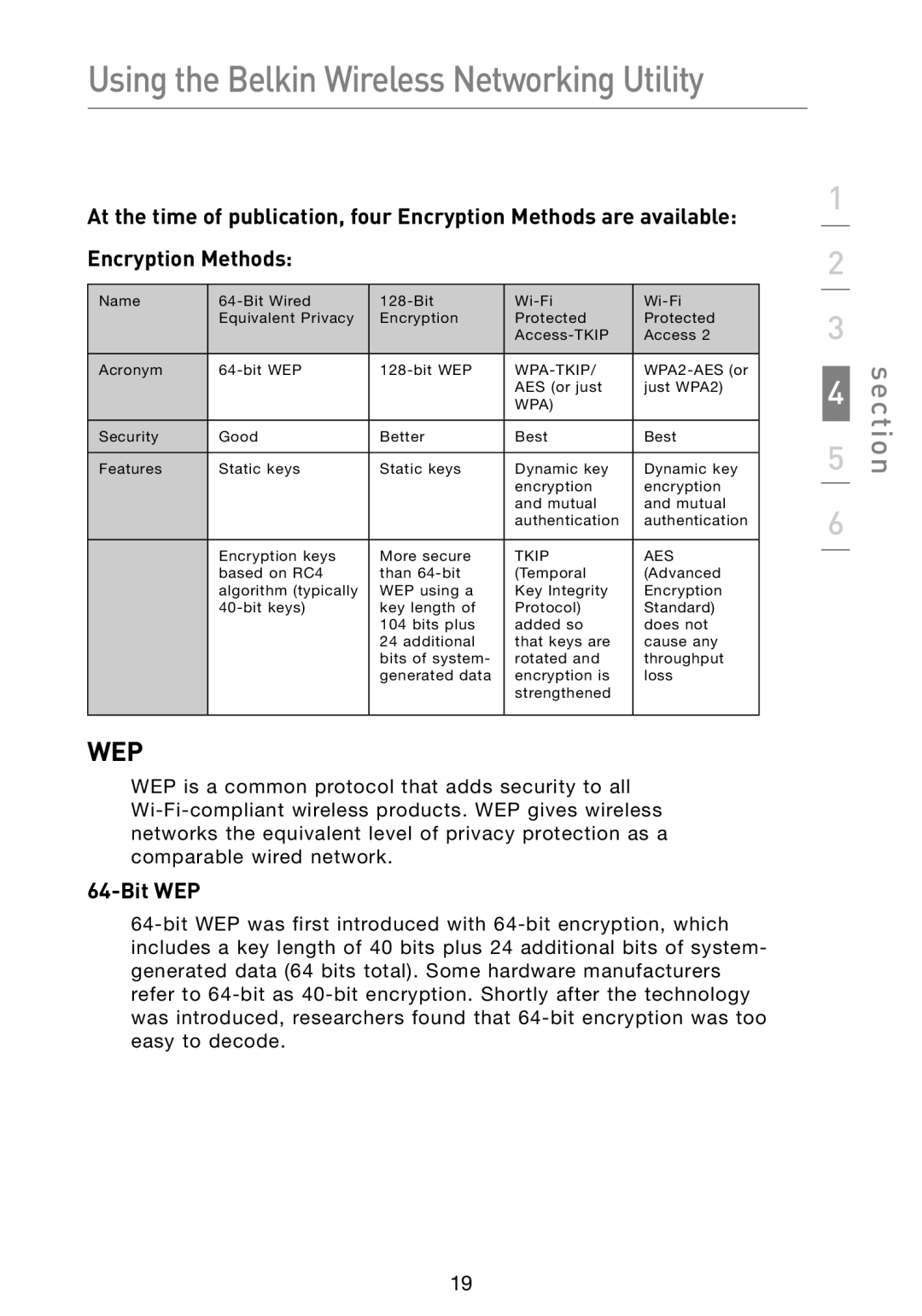
Using the Belkin Wireless Networking Utility
At the time of publication, four Encryption Methods are available: Encryption Methods:
Name | ||||
| Equivalent Privacy | Encryption | Protected | Protected |
|
|
| Access 2 | |
|
|
|
|
|
Acronym | ||||
|
|
| AES (or just | just WPA2) |
|
|
| WPA) |
|
|
|
|
|
|
Security | Good | Better | Best | Best |
|
|
|
|
|
Features | Static keys | Static keys | Dynamic key | Dynamic key |
|
|
| encryption | encryption |
|
|
| and mutual | and mutual |
|
|
| authentication | authentication |
|
|
|
|
|
| Encryption keys | More secure | TKIP | AES |
| based on RC4 | than | (Temporal | (Advanced |
| algorithm (typically | WEP using a | Key Integrity | Encryption |
| key length of | Protocol) | Standard) | |
|
| 104 bits plus | added so | does not |
|
| 24 additional | that keys are | cause any |
|
| bits of system- | rotated and | throughput |
|
| generated data | encryption is | loss |
|
|
| strengthened |
|
|
|
|
|
|
WEP
WEP is a common protocol that adds security to all
64-Bit WEP
1
2
3
4
5
6
section
19
